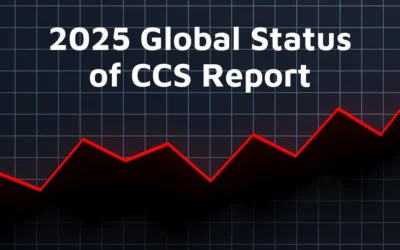Greenwashing undermines the credibility of carbon markets and delays meaningful climate action. Dynamic Carbon Credits offers high-integrity solutions like biochar, regenerative agriculture, and DAC to help corporations achieve net zero targets without compromising on transparency or impact. By focusing on additionality, permanence, and blockchain-enabled transparency, we’re building trust in the carbon market and driving real progress toward global climate goals.
Beau Parmenter
In the race to combat climate change, carbon credits have become a cornerstone of corporate sustainability strategies. These credits allow companies to offset their emissions by funding projects that reduce or remove carbon dioxide from the atmosphere. But as the carbon credit market grows, so does the risk of greenwashing – a practice that threatens to undermine the credibility of these efforts and derail progress toward net zero.
At Dynamic Carbon Credits, we’re committed to restoring trust and integrity to the carbon credit market. By focusing on high-quality, verifiable solutions, we help corporations avoid the pitfalls of greenwashing and achieve meaningful climate impact. But first, let’s explore what greenwashing is, why it’s harmful, and how companies can steer clear of it while meeting their sustainability goals.
According to the World Economic Forum, over 20% of Fortune 500 companies have made net-zero commitments, creating unprecedented demand for high-quality emission reduction credits. This guide provides sustainability leaders with a roadmap for developing and implementing a strategic ERC program that aligns with corporate goals and delivers measurable environmental outcomes.
What Is Greenwashing?
Greenwashing is the practice of making misleading or exaggerated claims about environmental efforts to appear more sustainable than reality. In the context of carbon credits, greenwashing often involves purchasing low-quality or unverifiable credits that fail to deliver real-world climate benefits.
For example, a company might claim to offset its emissions by investing in a reforestation project. But if that project was already planned or funded, it doesn’t represent additionality—a key principle in the carbon credit market. Worse, some credits are tied to projects with questionable permanence, such as forests that could be destroyed by wildfires or logging. And in some cases, credits are outright fraudulent, with no actual carbon reductions taking place.
The consequences of greenwashing extend far beyond individual companies. It erodes trust in the carbon credit market, delays meaningful climate action, and diverts funding away from projects that could make a real difference.
Why Greenwashing Is Harmful
Greenwashing isn’t just a PR problem – it’s a systemic issue that undermines the fight against climate change. When companies engage in greenwashing, they create a false sense of progress, claiming to be “net zero” while continuing to emit greenhouse gases at unsustainable levels. This delays the transition to a low-carbon economy and exacerbates the climate crisis.
The ripple effects are profound. Greenwashing erodes trust in the carbon credit market, making it harder for legitimate projects to attract funding. It penalizes companies that invest in high-quality credits by creating an uneven playing field. And it invites regulatory scrutiny, with governments and watchdog organizations increasingly cracking down on misleading sustainability claims.
For corporations, the stakes are high. Reputational damage, financial penalties, and loss of stakeholder confidence are just some of the risks associated with greenwashing. The message is clear: integrity isn’t optional – it’s essential.
The Metrics That Matter
To avoid greenwashing, companies need to focus on the fundamentals of high-quality carbon credits. At Dynamic Carbon Credits, we prioritize three key principles: additionality, permanence, and transparency.
- Additionality ensures that the carbon reductions or removals wouldn’t have happened without the credit. For example, our biochar projects sequester carbon in a stable form for centuries, representing genuine additionality.
- Permanence addresses how long the carbon will remain sequestered. Solutions like biochar and direct air capture (DAC) offer long-term storage, unlike forestry projects that risk reversal due to natural disasters or human activity.
- Transparency is about traceability and accountability. Through our partnership with Northern Trust, we use blockchain technology to ensure every credit is verifiable and auditable.
These principles aren’t just theoretical – they’re measurable. Below is a chart comparing the integrity of different types of carbon credits based on these criteria.






